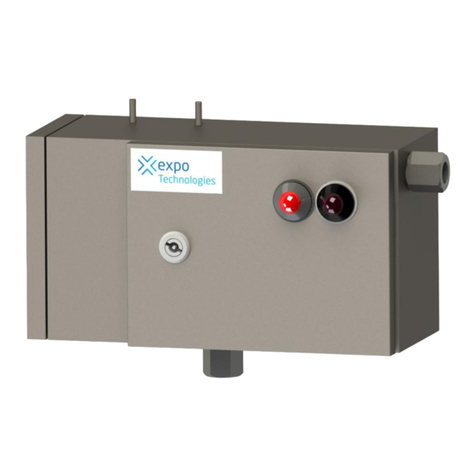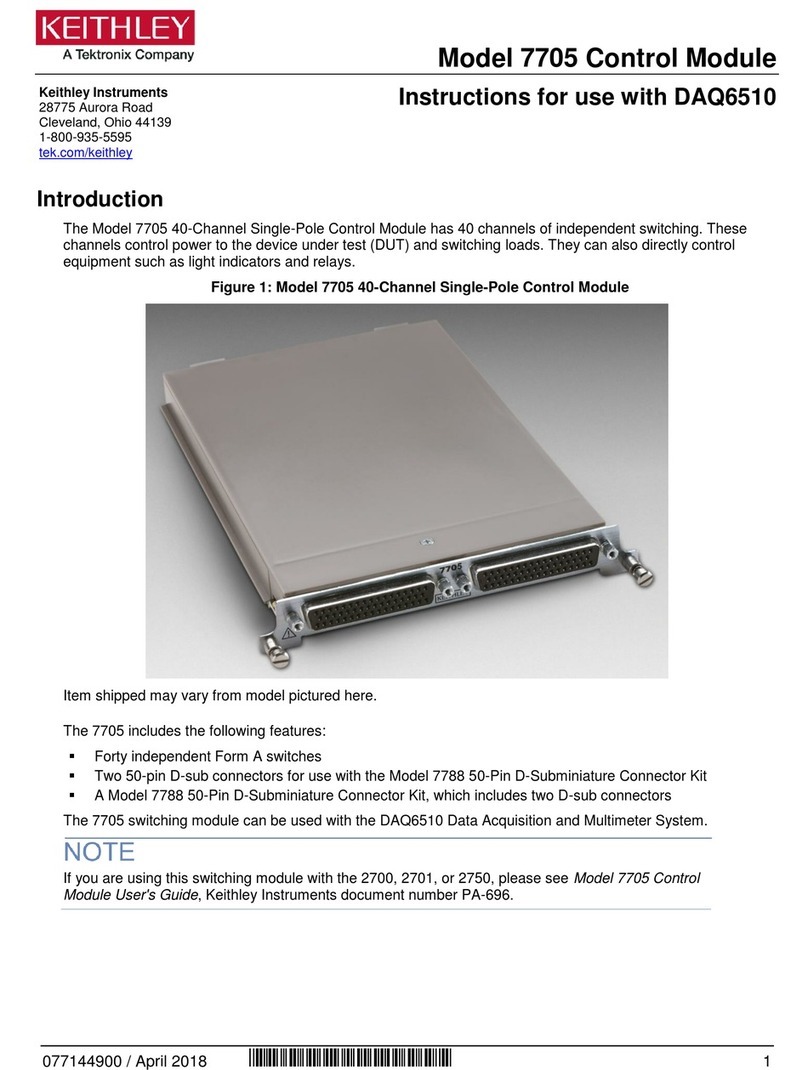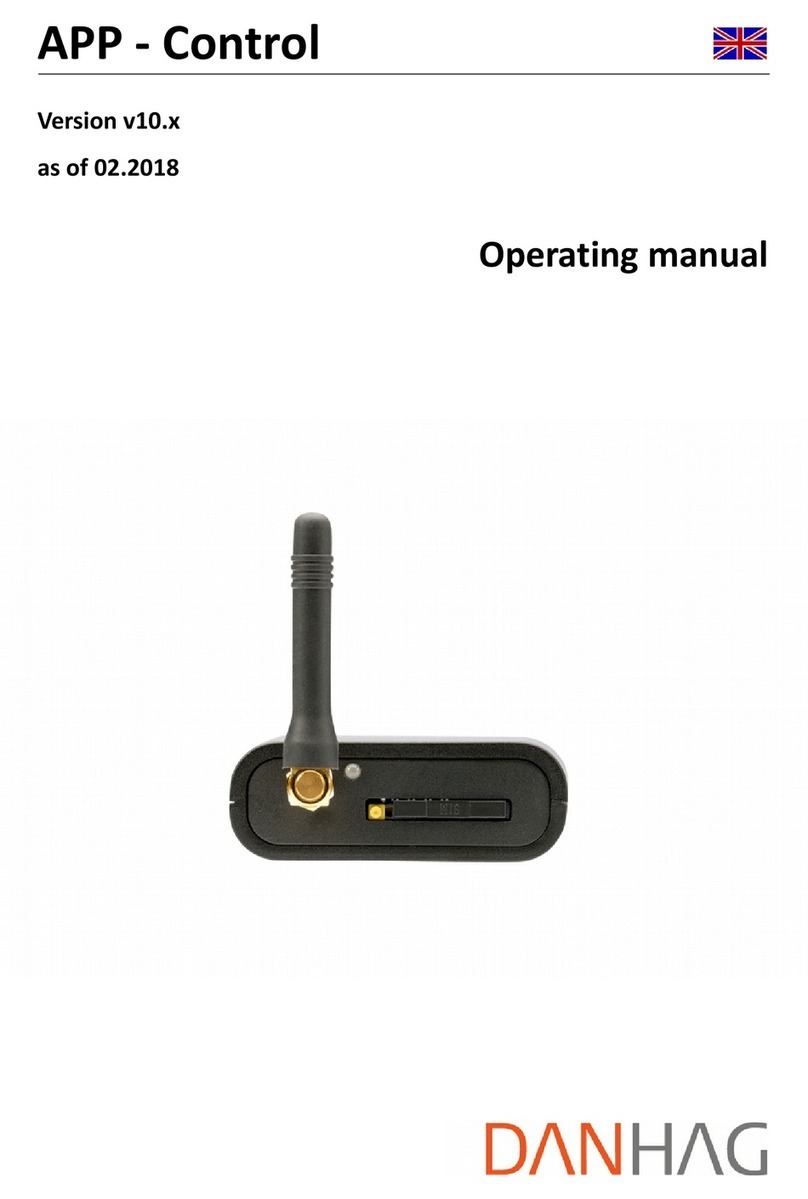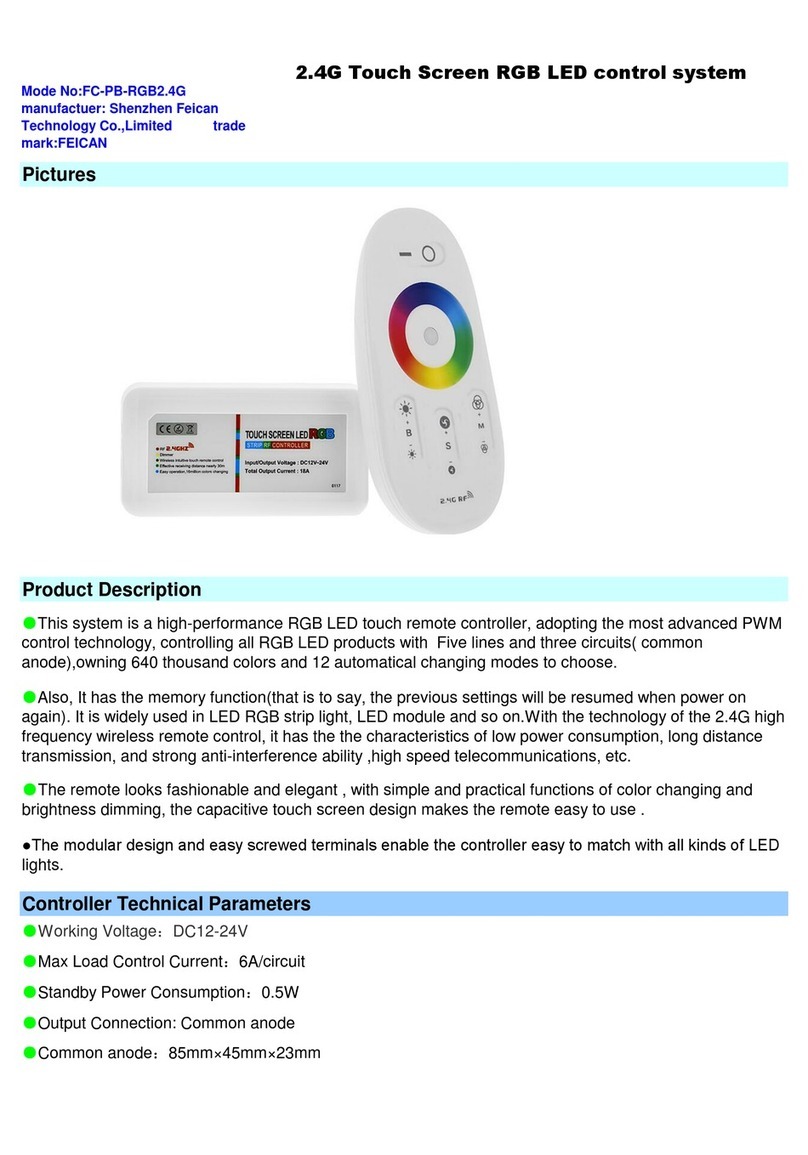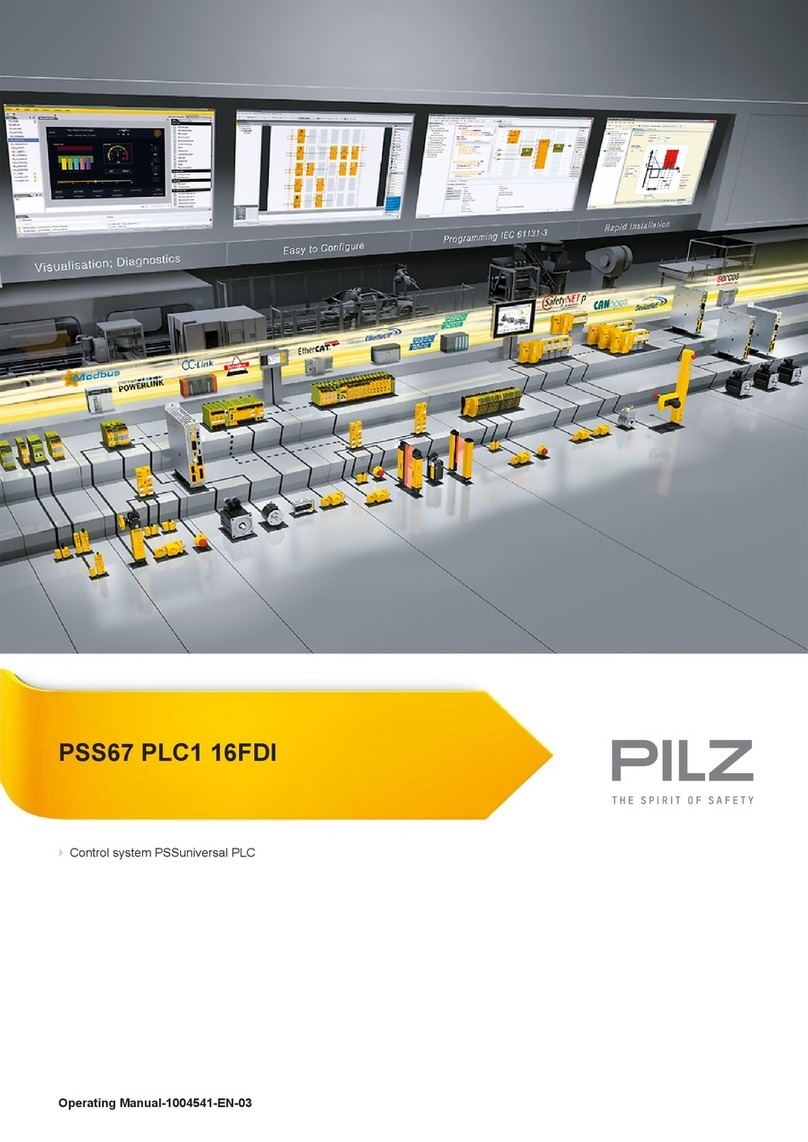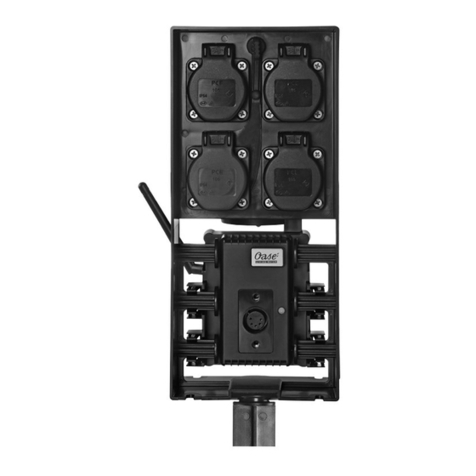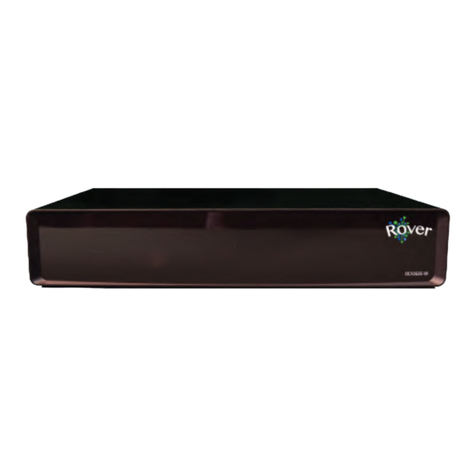Deligreen BI51 User manual

Integrated Battery Management System
User Manual
BI51 TYPE
BI5116/BI5132/BI5148
Changsha Deligreen Electronics Co.,Ltd.

. BI51 Type User Manual V2.4
1
Contents
Document Description.................................................................................................................................... 3
Disclaimer........................................................................................................................................................ 3
Chapter 1 Product Applications....................................................................................................................4
Chapter 2 Product Manual............................................................................................................................ 5
1. Foreword......................................................................................................................................... 5
1.1 First installation guide............................................................................................................. 5
1.1.1 Open-package checking.................................................................................................. 5
1.1.2 Safety confirmation......................................................................................................... 5
1.1.3 Environment confirmation.............................................................................................. 5
1.1.4 Function Confirmation.................................................................................................... 5
1.1.5 Components Installation..................................................................................................5
1.1.6 Cables installation........................................................................................................... 5
1.1.7 Adjusting confirmation................................................................................................... 5
1.1.8 Power-on test...................................................................................................................5
1.2 Safety Notice..............................................................................................................................6
1.2.1 Danger level.....................................................................................................................6
1.2.2 Reminders........................................................................................................................6
1.3 Operating environment............................................................................................................7
1.3.1 Environmental parameters...............................................................................................7
2. System overview..............................................................................................................................8
2.1 System components.................................................................................................................. 8
2.2 System Structure.......................................................................................................................8
2.3 System parameters................................................................................................................... 9
2.4 Technical feature.................................................................................................................... 11
2.5 Technological superiority...................................................................................................... 11
3. BIU Introduction.......................................................................................................................... 12
3.1 BIU function introduction..................................................................................................... 12
3.2 BIU interface definition......................................................................................................... 13
3.3 BIU external dimensions and weight....................................................................................15
3.4 BIU Installation dimensions.................................................................................................. 15
3.5 CSU dimension........................................................................................................................16
3.6 Voltage collection wires..........................................................................................................17
4. Software introduction.................................................................................................................. 17
4.1 Introduction of software........................................................................................................ 17
4.1.1Main interface.................................................................................................................17
4.1.2Cell information............................................................................................................. 18
4.2 Upgrade the software............................................................................................................. 19

. BI51 Type User Manual V2.4
2
TERMS:
BIU Battery Integrated-management Unit
BCU Battery Control Unit
BMU Battery Module-management Unit
CSU Current Sample Unit
PDU Power Distribution Unit (Also known as Strong Electric Control Unit and
High Voltage Box)
HSD High Side Drive
LSD Low Side Drive
NTC Negative Temperature Coefficient
SOC State of Charge
SOH State of Health
CAN Controller Area Network
CHG Charging Interface
RL Relay
HV High Voltage
CAN0 BMS Debugging/ Internal communication
CAN1 BMS communicate with VCU/MCU
CAN2 BMS communicate with charger

. BI51 Type User Manual V2.4
3
Document Description
Thanks for choosing JDI Battery Management System(BMS); this manual
introduced how to use the BMS, which has to be read carefully before installing,
operating and maintaining.
Without the written permission of Anhui JDI New Energy Technology Co., Ltd.
(hereinafter referred to as JDI)no company or individual may copy, copy or
disseminate any part of this manual.
This manual may contain intellectual property rights for the company and other
possible licensees. Without the written permission of the relevant obligee, it is
not allowed to copy, decrypt, reverse engineer or any other infringing activity in
any form to the product described in this manual.
Disclaimer
Information contained in this manual is subject to change without notice.JDI
will not be responsible for any loss caused by the user's misunderstanding of the
document. JDI will not be responsible for any type of injury or damage caused
by using of the document.JDI will not be responsible for any injury or damage
caused by using the product described in this document.
The BMS is a custom product. Client’s requirements and system information
are necessary.JDI will not be responsible for any injury or damage caused by
incorrect information.
The features and functions of the product and accessories described in this
manual depend on the product's application environment and user’s needs,
which may not completely corresponding with this manual.

. BI51 Type User Manual V2.4
4
Chapter 1 Product Applications
BMS is an important part of EV system. Adopting automobile grade components, JDI BI
series can be well extended and widely applied to pure electric and hybrid vehicle, which not
only can detect, manage, control the batteries in single box, but also can be extended through
BMU to manage batteries in several boxes. The series fully meet the systematization
management requirement of the automotive-grade power battery pack. The series is suitable
for LiCoMnNiO2, LiFePO4,Ni-MH, super capacitor and other 0~5v cell.
The product is composed by a Battery Integrated-management Unit (BIU), a display, a
current sensor/diverter, and cables. The series include BI5116, BI5132 and BI5148. Each
BIU can collect and manage 16/32/48 cells, and can be extended to manage 160 cells at most.
The system acquires real-time battery information through Daisy Chain Topology (DCT).
BIU communicates with VCU, intelligent charger, instrument and other device through
CAN-bus. The display shows the real-time information of state, power, SOC etc.VCU
controls the motor through intelligent motor controller after reading BMS information. BIU
can also communicate with intelligent charger and charge pile. There are temperature
measurement of charging interface, CC, CP, CP2 and other required functions
BI5116/BI5132/BI5148
Figure 2 Appearance and Application examples
Figure 1 System topology

. BI51 Type User Manual V2.4
5
Chapter 2 Product Manual
1. Foreword
1.1 First installation guide
1.1.1 Open-package checking
Please check all components according to the packing list to confirm the quantity and specification. Please
confirm the surface of modules, cables and accessories well.
1.1.2 Safety confirmation
Please read the manual in detail, and prepare the instruments and installation environment accordingly.
1.1.3 Environment confirmation
Please read the operating environment in detail. If the environment not suitable to your requirements,
please contact our service staff to get support.
1.1.4 Function Confirmation
Please read the system overview in detail to understand the function and interface of modules, cables
and accessories
1.1.5 Components Installation
Please read the installation guide carefully, installing the module after confirming the station of
hardware(please installing nearby, hardware would be installed near the batteries, charger or motor
controller).
*Notice: The fastening degree of hardware installation needs to meet the vibration and impact demand of
the application.
1.1.6 Cables installation
Please follow these steps to install the wire harness,
a) Communication cables, control cables, temperature cables connection, ensure to cut off the power of
both high and low voltage circuit, connecting the module communication cables, control cables (relay,
switch signal, CAN-bus of charge& discharge), temperature sensor cables and current sensor cables
b) Voltage collection cables connection, connect the voltage collection cables to cells orderly according
to the system diagram and labels. After confirming all cables connected with correct order(very
important), please connect the other side to module
c) Insulation detection cables, high voltage detection cables connection (optional accessories), connect
the cables of insulation detection, high voltage detection and divider, and connect the other side after
confirm all cables connected correctly
d) After all of the cables connected, please check each cable according to the system diagram to ensure
all cables connected correctly and reliably.
*Notice:
All connectors should be locked before connecting the detection cables
Check the insulation of connectors; avoid conductive impurity such as water, dust, or metal particles.
Ensure to cut off the power of high and low voltage circuits before all cables connected correctly
1.1.7 Adjusting confirmation
After all of the components connected correctly, BMS could connect to power. Observing the display
information and relay state, if error happens, please check whether the module and cables connected
correctly or not. If connected correctly, please contact our service staff to get support.
1.1.8 Power-on test

. BI51 Type User Manual V2.4
6
After confirming the function, please perform a charge-discharge experiment, observing the system
operation condition, if errors happened please record, the system operates normally if no error.
1.2 Safety Notice
1.2.1 Danger level
For your safety, please read this part carefully, the danger level as below:
Danger level
Caution
There may be unexpected results or property loss if ignore the notice or not take
corresponding measures.
Carefully
Personal injury or a lot property loss may be caused if not carefully.
Danger
Serious injuries or death may occur if not carefully.
1.2.2 Reminders
Before installation
Check if there is shortage of components, hardware or cables damage when open boxes,
please don’t install if any of above happened.
Check for water on the box, please don’t install if water inflow.
Handle gently when unpacking and moving, otherwise equipments may be damaged.
Installation
To avoid system error, please stay away from water, dust and strong electromagnetic
environment.
To avoid accidents, the operator must be an electric engineer.
The system is used for monitoring and managing battery pack. Please notice the usage.
Please check voltage of power supply, the range of system working voltage is 9~32V
To avoid system failure, please install the cables strictly in accordance with the order of
batteries.
To avoid system damage, please check and ensure the cables installed in correct order.
To avoid accidents, power supply should be shut down during installation.
To avoid serious accidents, please use insulating tools or insulate the tolls.
Please focus on checking voltage collecting cables to make sure there is no damage at any
cable or connector loosen.
To avoid battery pack serious damage and fire, please ensure the relay cables installed
correctly.
Operation

. BI51 Type User Manual V2.4
7
To avoid personal injure and system damage, unauthorized person cannot test the signal
during the system operating.
To avoid serious accidents, please protect the system from water-drop, dust or other
particle.
Maintenance
To avoid personal injure, unauthorized person cannot repair or maintain the system.
To avoid accidents, please do not repair or maintain when system power on.
To avoid system damage, non-authorized person cannot breake the module box.
There are lots of high accuracy device, please prevent from static electric. Do not touch.
To avoid serious accidents, unauthorized changing of the system is forbidden.
1.3 Operating environment
1.3.1 Environmental parameters
Table 1 Parameters of operating environment
Item
Min
Max
Unit
Remark
Environment parameters
Operating temperature
-30
85
℃
\
Storage temperature
-40
125
℃
\
Altitude
\
4000
m
\
Humidity
\
95
%RH
No droplet
Atmosphere pressure
57
101
kPa
\
Salt spray(Continued
atomization time)
\
16
h
\
Mechanical parameters
Vibration(Amplitude or
acceleration)
\
30
m/S2
Amplitude 1.2mm when
10~25Hz;
Max 30 m/S2when26~500Hz
Drop(height)
\
1.5
m
Horizontal vertical direction
Impact(acceleration)
\
150
m/S2
Adopting half sin shock wave
Dustproof& Waterproof (IP
degree)
\
54
\
GB 4208

. BI51 Type User Manual V2.4
8
Electric environment
Supply voltage
9
18
V
Direct current, typical value:12v
Detection range of total
voltage
9
400
V
\
Detection range of single
cell voltage
0
5
V
\
Detection range of current
-500
500
A
\
Series of battery
4
160
cell
Each board collects 16/32/48 cell
at most, cascade extension is
supported.
2. System overview
2.1 System components
Table 2 Components List
Item
Number
Function
BIU
Necessary,
1pce
Internal communication; External communication; State estimate; Safety
management; Charge&discharge management; Input control; Output control;
Total voltage detection; Insulation detection; Single cell voltage collection;
Temperature collection
CSU
Necessary,
1pce
Current collection, hall current sensor and diverter are supported
Cables
Necessary,
1set
Voltage detection; Temperature detection; Communicating connection; Power
connection; Sensor connection; Control connection
Optional components
BMU
Max≤10 pcs
Cell voltage collection; temperature collection, DCT communication;
suitable for numbers of batteries in several separated boxes
LCD
Optional, 1pce
Data display; Parameter configuration; Failure warning
DTU
Optional, 1pce
Data remote upload; Data remote download; Mobile application
PDU
Optional, 1set
Pre-charge circuit; Charging relay; Discharging relay, Main circuit over-
current protection; Other power protector of the vehicle
2.2 System Structure

. BI51 Type User Manual V2.4
9
Figure 3 System wiring diagram
Notice: BIU have to be installed into the negative side of battery pack when using BIU +BMU
combination. e.g: when using BI5116+BM5116 to collect a 32 cells pack, the cell of total negative is
B1,the cell of total positive is B32.Then BI5116 should collect B1~B16,and BM5116 should collect
B17~B32.It’s very important to connect correctly, or the total voltage and insulation detection will be
influenced.
2.3 System parameters
Table 3 System parameters
Parameter
Min
Typical
Max
Unit
Description
Detection range of
total voltage
12
\
600
V
12~300V, rated voltage of battery pack
Detection accuracy
of total voltage
\
\
\
%
≤0.2%
Total voltage
detection channel
\
\
2
\
Two channels of relay could be used at same
time.
Series of battery
4
\
160
S
BIU can collect 48s at most; BMU qty can be
extended to 10.units.

. BI51 Type User Manual V2.4
10
Detection range of
single cell voltage
0
\
5
V
\
Detection accuracy
of single cell
\
\
\
%
≤0.2%,±5mV error
Current detection
range
-500
\
500
A
Hall current sensor
Current detection
error
0
0.5
3
A
≤0.5%FSR,typical value 0.5A
Temperature
detection channel
\
4
\
\
There are 4 temperature sensors in every 16
cells.
Temperature
detection range
-40
125
℃
\
Temperature
detection accuracy
0
1
2
℃
NTC ,100K
Detection error
Insulation
resistance
0
10KΩ
10%
KΩ
0~200K Ω , error <10K Ω ; >200K Ω ,
error≤±10%
Balance current
\
50
120
mA
\
Min voltage
difference of
starting balance
30
50
800
mV
Configurable
CAN-bus channel
\
\
3
\
Charger/Vehicle/BIU&BMU, CAN2.0B
Serial port
\
\
1
\
Could be used to program software and
connect display
Relay output
channel
\
\
4
\
Active, continuous current 1A, instantaneous
5A
Input channel
number
\
\
4
\
Input signal, such as: active High、ACC、
ON、Charging awaken
Charging connect
confirmation
\
\
3
\
CC2,CC,CP
Max cascade of
BIU and BMU
0
\
10
\
\
SOC estimation
error
0
3%
5%
\
SOC≤20%,SOC≥80%:3%;
80%>SOC>20%:5%
SOH estimation
accuracy
0
5%
10%
\
SOH>80% ,error within 5%;SOH ≤80% ,
error within 10%

. BI51 Type User Manual V2.4
11
2.4 Technical feature
(1) SPI Daisy chain topology structure
BIU and BMU connected by Daisy chain topology. They can collect information of 16~48(BIU collection
number)+16(or 32 or 48)*n(n=BMU number)cells.
(2) Single cell voltage collection
BIU and BMU collect single cell voltage through voltage collecting module。
(3) Temperature collection
BIU and BMU collect each battery module temperature through NTC temperature modules.
(4)PACK total voltage detection
BIU can detect the total voltage of battery pack.
(5)CAN- bus communication
Each BMCU is equipped 3 ways of CAN-bus
CAN0: used for communicating with CSU and acquiring real-time total current
CAN1: used for communicating with charger.
CAN2: used for communicating with VCU/MCU, receiving order and status information from VCU/MCU.
(6)RS485 communication
External display shows SOC, voltage, current through RS485 communication. RS 485 communication can
also be used to update the program.
(7)SOC,SOH、SOP calculation
BIU calculates SOC,SOH and SOP on the basis of total current, total voltage, temperature and other
parameters.
(8) State of battery capacity
BIU calculates residual capacity, and shows it on LCD display/vehicle instrument/software.
(9) Driven relay/fan
BIU control the load power on/off through high side driven.
(10) Pre-charge module
When BIU control the load charging, it will pre-charge the main circuit load through pre-charge module
before charging the load.AUX+ could be used for controlling external pre-charge
(11)Onboard insulation monitoring
Monitor the insulation from high voltage positive and negative to vehicle case. Alarm when insulation
resistance under a threshold value.
(12)Input signal detection
BIU estimates vehicle operation state and charging state through detecting Key-On wake-up signal and
charger wake-up signal.。
(13) Key information power-down saving
BMS will save the system key data (such as Max&Min voltage and the corresponding cells, SOC, current,
history error, etc ) when detecting the battery pack power-down.
2.5 Technological superiority

. BI51 Type User Manual V2.4
12
The core members come from the top battery and BMS manufacturers, which have rich experience. We
combine battery characteristics and BMS operating practice, devote to making battery thinking, create
intelligent security of electric vehicle.
3. BIU Introduction
3.1 BIU function introduction
BIU is the core unit of BMS, which can collect battery information and analyze them to manage. The
function includes: state estimate, current detection, external communication, internal communication,
warning and protection, external control, signal join up, voltage collection. Description as below:
Table 4 BIU function
Function
Description
Voltage detection
Realize real-time voltage detection through collecting single cell voltage.
Temperature
detection
Realize real-time temperature detection through 1~4 temperature sensor in battery
pack.
SOC estimation
Based on SOC algorithm and calibration compensation strategy, the battery group
SOC was estimated dynamically.
Current detection
The charge and discharge current is tested in real time through hall current sensor
or diverter.
Communication
Communicate with other modules, charging devices, and vehicles of BMS system
through 3 CAN interfaces.
Upper computer
connecting
Communicate with Upper computer to display data and download program
through RS485 interface.
Warning and
protection
Conduct alarm and protection according to the sampling information and state
estimation results through built-in alarm protection control strategy.
System
self-check
Check function and state of each unit to ensure system safety
Control output
6relay control interfaces ensure the control signal output to charge, discharge and
auxiliary equipment
Digital input
4 digital input interfaces can receive external digital control signal.
Analog input
3 analog input interfaces can receive external analog control signal.
Insulation detection
Test the total voltage and the positive&negative leakage current of the battery
pack.

. BI51 Type User Manual V2.4
13
3.2 BIU interface definition
There are 3 types of BIU in BI51series: BI5116, BI5132, BI5148.They have same function except
different collecting cells number. Below we take BI5148 as example.
ST1~ST4 position and interface sequence
ST1 interface
Board connector
Type:MX34040NF2
Brand:JAE
Line connector
Type:MX34040SF1
Terminal type:M34S75C4F2
Pin
Name in
stick
Description
Pin
Name in
stick
Description
40
12V+
BMS INPUT 12V+
20
12V+
BMS INPUT 12V+
39
CHG_12V+
12 V Charger Wakeup
19
CP
GB slow charge CP
38
KeyOn
Key-On
18
CC
GB slow charge CC
37
CC2
GB fast charge CC2
17
HALL_IN1
Hall signal input 1
36
HALL_IN2
Hall signal input 2
16
CS_5V-
Current sensor power 5V-
35
CS_5V+
Current sensor power 5V+
15
NTC1+
Charge interface temperature
detection 1+
34
NTC1-
Charge interface temperature
detection 1-
14
NTC2+
Charge interface temperature
detection 2+
33
NTC2-
Charge interface temperature
detection 2-
13
CAN0_H
Inner CAN-bus high
32
CAN0_L
Inner CAN-bus low
12
CAN1_H
Discharge CAN-bus high
31
CAN1_L
Discharge CAN-bus low
11
CAN2_H
Charge CAN-bus hign
30
CAN2_L
Charge CAN-bus low
10
485A
Display RS485A
29
485B
Display RS485B
9
485GND
Display RS485GND
28
V_GND
Vehicle Frame connection
8
LCD_12V-
Display power 12V-
27
12V-
BMS INPUT 12V-
7
CHG_12V-
Charger input 12V-
26
RL7_H
High level drive, default reserved
6
RL8_H
High level drive, default reserved
25
RL5_H
High level drive, default reserved
5
RL6_H
High level drive, default reserved
24
RL4-
Heating relay 12V-
4
RL4+
Heating relay 12V+
23
RL3-
Charge relay 12V-
3
RL3+
Charge relay 12V+
22
RL2-
Pre-charge relay 12V-
2
RL2+
Pre-charge relay 12V+
21
RL1-
Discharge relay 12V-
1
RL1+
Discharge relay 12V+
ST2 interface
ST1
ST2
ST3
ST4

. BI51 Type User Manual V2.4
14
Board connector
Type:MX34032NF
Brand:JAE
Line connector
Type:MX34032SF1/JAE
Terminal type:M34S75C4F2/JAE
Pin
Name in
stick
Description
Pin
Name in
stick
Description
32
B1-
Battery 1-
16
NC
Battery pack-
31
B2+
Battery 2+
15
B1+
Battery 1+
30
B4+
Battery 4+
14
B3+
Battery 3+
29
B6+
Battery 6+
13
B5+
Battery 5+
28
B8+
Battery 8+
12
B7+
Battery 7+
27
B10+
Battery 10+
11
B9+
Battery 9+
26
B12+
Battery 12+
10
B11+
Battery 11+
25
B14+
Battery 14+
9
B13+
Battery 13+
24
B16+
Battery 16+
8
B15+
Battery 15+
23
T1+
NTC 1+
7
T1-
NTC1-
22
T2+
NTC2+
6
T2-
NTC2-
21
T3+
NTC3+
5
T3-
NTC3-
20
T4+
NTC4+
4
T4-
NTC4-
19
COMMH_P
Daisy chain communication P
3
COMMH_N
Daisy chain communication N
18
FAULT_P
Daisy chain communication fault
P
2
FAULT_N
Daisy chain communication
fault N
17
HV1+
Insulation/total voltage
detection+1
1
HV2+
Adhesive total pressure
detection +2
ST3 interface
Board connector
Type:MX34028NF2
Brand:JAE
Line connector
Type:MX34028SF1
Terminal type:M34S75C4F2
Pin
Name in
stick
Description
Pin
Name in
stick
Description
28
B17-
Battery 17-
14
NC
Undefined
27
B18+
Battery 18+
13
B17+
Battery 17+
26
B20+
Battery 20+
12
B19+
Battery 19+
25
B22+
Battery 22+
11
B21+
Battery 21+
24
B24+
Battery 24+
10
B23+
Battery 23+
23
B26+
Battery 26+
9
B25+
Battery 25+
22
B28+
Battery 28+
8
B27+
Battery 27+
21
B30+
Battery 30+
7
B29+
Battery 29+
20
B32+
Battery 32+
6
B31+
Battery 31+
19
NC
Undefined
5
NC
Battery pack+
18
T5+
NTC5+
4
T5-
NTC5-
17
T6+
NTC6+
3
T6-
NTC6-
16
T7+
NTC7+
2
T7-
NTC7-
15
T8+
NTC8+
1
T8-
NTC8-

. BI51 Type User Manual V2.4
15
ST4 interface
Board connector
Type:MX34028NF2
Brand:JAE
Line connector
Type:MX34028SF1
Terminal type:M34S75C4F2
Pin
Name in stick
Description
Pin
Name in stick
Description
28
B33-
Battery 33-
14
NC
Undefined
27
B34+
Battery 34+
13
B33+
Battery 33+
26
B36+
Battery 36+
12
B35+
Battery 35+
25
B38+
Battery 38+
11
B37+
Battery 37+
24
B40+
Battery 40+
10
B39+
Battery 39+
23
B42+
Battery 42+
9
B41+
Battery 41+
22
B44+
Battery 44+
8
B43+
Battery 43+
21
B46+
Battery 46+
7
B45+
Battery 45+
20
B48+
Battery 48+
6
B47+
Battery 47+
19
NC
Undefined
5
NC
Battery pack+
18
T9+
NTC9+
4
T9-
NTC9-
17
T10+
NTC10+
3
T10-
NTC10-
16
T11+
NTC11+
2
T11-
NTC11-
15
T12+
NTC12+
1
T12-
NTC12-
3.3 BIU external dimensions and weight
Item
Unit
Specific
BI5116 external dimensions
mm*mm*mm
184x 108.1x 31.2
BI5132 external dimensions
mm*mm*mm
230x 108.1x 31.2
BI5148 external dimensions
mm*mm*mm
276x 108.1x 31.2
BM5116 external dimensions
mm*mm*mm
117.76 x 80.73 x 24.88
BI5116 weight
g
490
BI5132 weight
g
620
BI5148 weight
g
750
BM5116 weight
g
120
3.4 BIU Installation dimensions

. BI51 Type User Manual V2.4
16
Figure5 BI5116 dimensions
Figure 6-BI5132 dimensions
Figure7-BI5148 dimensions
3.5 CSU dimension

. BI51 Type User Manual V2.4
17
Figure 9-CSU dimension
3.6 Voltage collection wires
Each detection interface of BIU&BMU can collect 6~16 cells information. The connection of
different number as below:
…
Figure10- Connection diagram of different number
4. Software introduction
4.1 Introduction of software
4.1.1Main interface
Click “Overview” to enter the main interface
It shows the basic information of batteries and BMS, the function windows of upper computer
and system error information.
Hall current sensor

. BI51 Type User Manual V2.4
18
a) Upper computer function buttons: Overview / Cell information/ Calibration /Upgrade
b) BMS power and charger information
KeyOn means the power is from DC-DC converter during discharging.
Wakeup voltage means the power is from charger auxiliary power supply during charging.
The voltage of VCC should be equal to Keyon voltage and Wakeup voltage. Please contact
us if the voltage difference over 3V.
Charger output voltage/current: BMS get the charging data sent by charger (through CAN-
bus). The data should be same to charger display.
c) Alarm status,Green---Normal; Orange—Alarm; Red ---Major fault
4.1.2Cell information
Click “Cell information” to enter the batteries information interface.
Cell information interface— display cell voltage and temperature information.

. BI51 Type User Manual V2.4
19
Calibration interface—Click “Calibration”to enter calibration interface
Calibration interface—Function area of BMS parameter configuration, users can configure
parameters and simulated failure on this interface.
a) Function area: click the button to enter the corresponding parameter configuration interface
b) Parameter configuration interface: system supports manually modification and batch import
parameters.
c) Import—Import the current parameters (“.json”) to BMS, click Calibration, and then click
Flash.
d) Export—Export the BMS data to a “,json” file, it can be used to modify batched parameters.
e) Read—Read the BMS existing parameters. Default: automatic reading.
f) Calibration—It’s necessary to click “Flash” after modifying the parameters. Otherwise, the
new parameters are invalid.
g) Flash—Insure to click “Flash” after calibrating parameters. Otherwise, parameters will reset
to the parameter after BMS restart.
h) Parameters display and modifying. Double click the data, and modify it.
i) eg: modifying the SCO to 30%, double click “65535”→enter 30→click “calibration”→click
“flash”.
4.2 Upgrade the software
Open Upper computer software, click”Upgrade”→click “Burn”→choose the program→
click “Open”
This manual suits for next models
3
Table of contents
Popular Control System manuals by other brands

IXSEA
IXSEA TT801 user guide
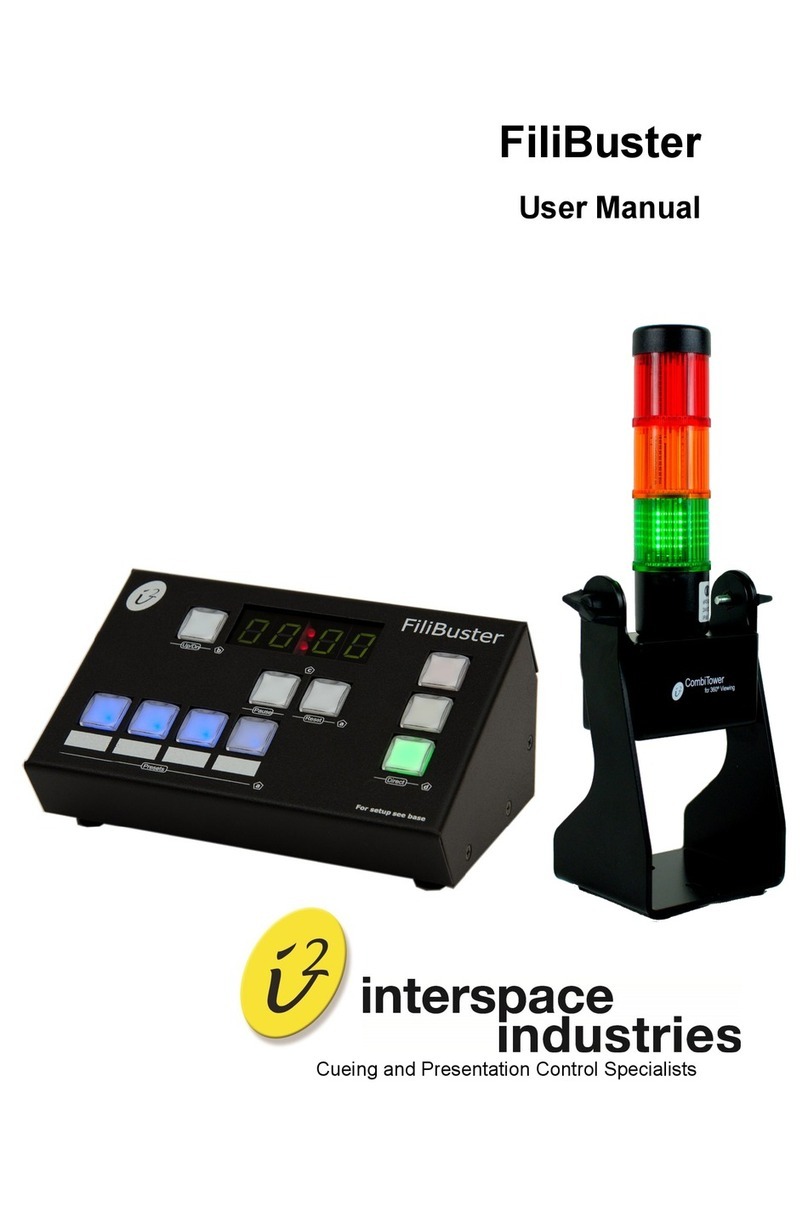
Interspace Industries
Interspace Industries FiliBuster user manual

Tekmar
Tekmar tN2 house control 400 Quick setup guide
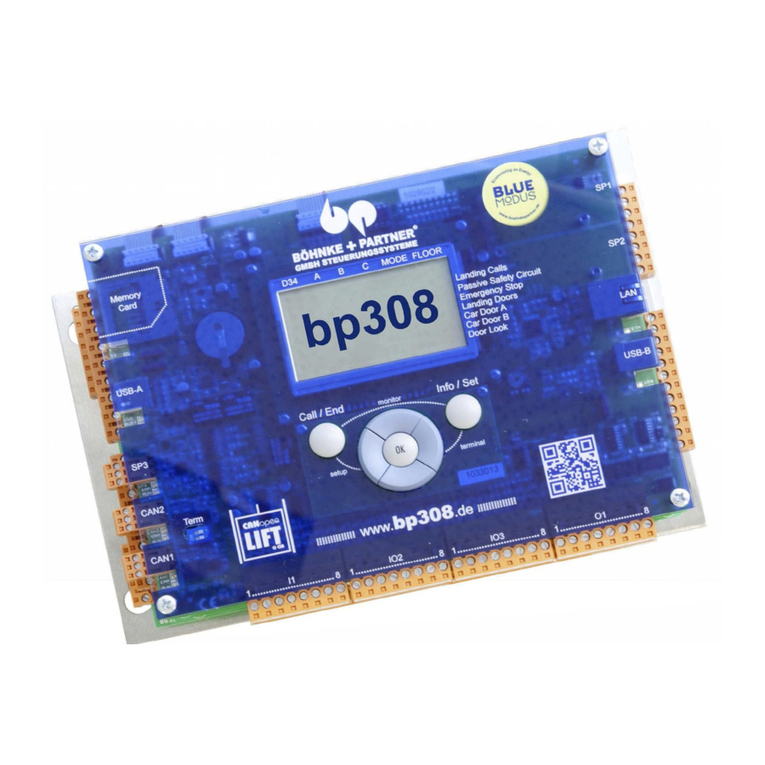
schmersal
schmersal bp308 installation manual
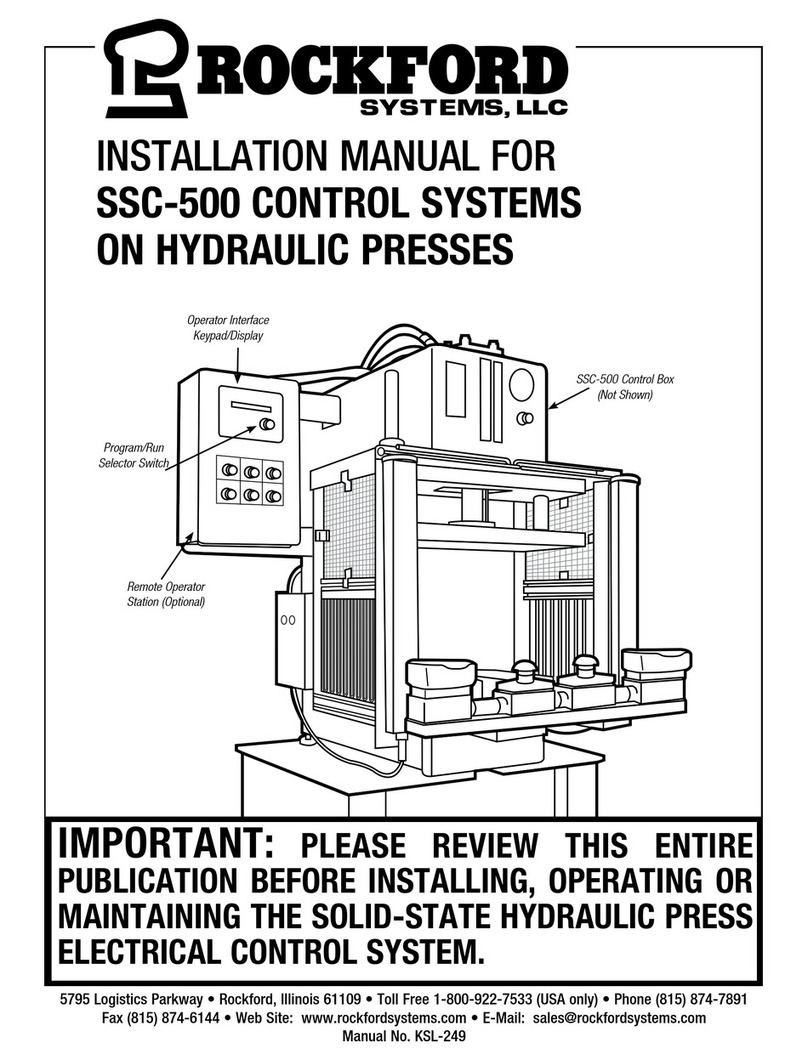
Rockford Fosgate
Rockford Fosgate SSC-500 installation manual
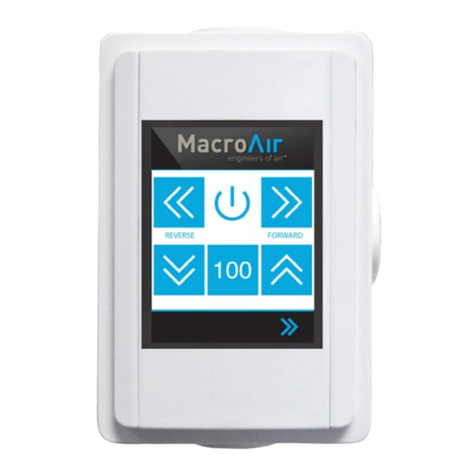
MacroAir Technologies
MacroAir Technologies Controller 4 Operation manual



